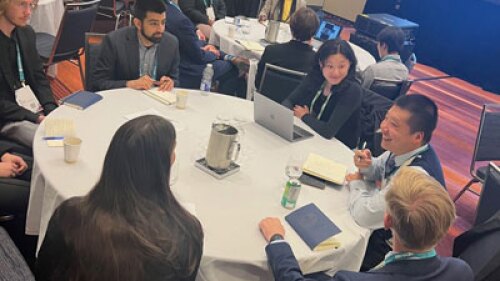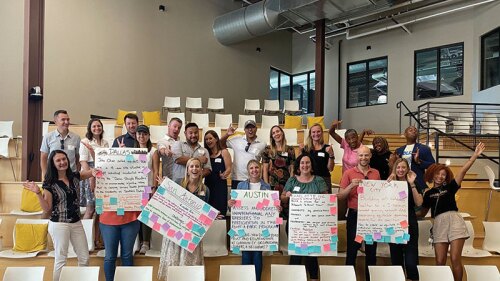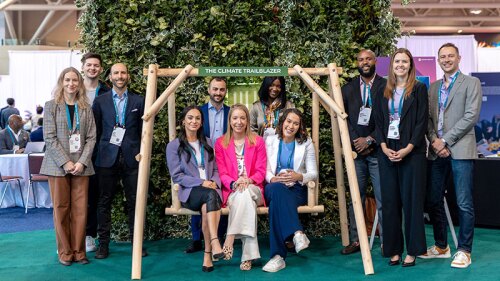A former military base that once was home to both U.S. imperial forces and the Filipino army, Bonifacio Global City (BGC) is now one of the fastest-growing financial centers in Manila. Offering a skilled English-speaking workforce, reliable infrastructure, and comparable rents to Makati, the city’s top commercial destination, BGC has become a magnet for the business process outsourcing (BPO) industry.
Google, Coca-Cola, and JLL are among the dozens of firms that have set up outsourcing units in one of BGC’s gleaming new high rises to provide 24/7 support to clients and customers around the globe. Accompanying this surge in demand for office space are efforts to make BGC an attractive place to do business. New restaurants and retail have taken root alongside other quality-of-life enhancements like museums, a strong network of schools, and parks.
ULI members in the Philippines have been keen observers of BGC’s growth, having produced Ten Principles for Sustainable Development of Metro Manila’s New Urban Core in 2013. With support from a ULI Foundation urban innovation grant, they are taking this work a step further through a new initiative that focuses on the health of BGC’s workers and residents as well as fortifying the city’s climate resilience. Charles Rufino, a ULI trustee and chair of ULI Philippines, is spearheading the project.
“Communities must seek a diaglogue with developers to make the best use of land to improve health and well-bieng in times of natural disasters,” Rufino said.
In March, Rufino and other members kicked off the Resilient and Healthy BGC Initiative through an all-day festival, which served as the first of several community engagement events that ULI Philippines intends to host over the project’s two-year timeline. The festival combined fun and games with the serious message of health promotion and disaster preparedness. While nibbling on local food, residents and workers participated in a disaster preparedness scavenger hunt and simulation exercise in which they identified important landmarks and evacuation areas throughout the city.
Also at the festival, ULI Philippines unveiled its proposal for the Bonifacio Greenway/Linear Park, a 0.9-mile (1.5 km) greenway that would serve as both a recreation area for exercise and an evacuation route during a typhoon or other natural disaster. The project has received an initial round of funding from corporate sponsors. Other partners in the project include the Asian Development Bank and the Institute for Transportation and Policy Development, which will advise ULI Philippines on how best to link the greenway to surrounding neighborhoods and the Manila Metro Rail Transit (MRT) system, Rufino said.
Located in one of the most disaster-prone areas in the world, the densely populated cities of the Philippines are particularly vulnerable to the effects of climate change. BGC has the added significance of being one of the country’s main economic assets, says ULI Philippines coordinator and city planner Jez Apelar.
“Metro Manila, which includes BGC, is the economic heart of the Philippines, contributing about 74 percent of the country’s GDP,” he said. “If these major urban centers are not protected against extreme weather events, the Philippines’ economy can be severely crippled, impacting the country’s ability to grow its economy and attract future investors. BGC is leading this growth, and therefore BGC must also lead in being resilient.”
At the same time, the conversion of BGC from a military installation into a densely packed commercial hub provides an opportunity to remake the built environment in ways conducive to a healthy lifestyle. That means taking advantage of BGC’s street grid. “BGC is a very walkable city,” Apelar said. “The challenge is changing people’s mind-sets to walk and bike more as well as limiting the case of cars. At the same time, connections and pedestrian access into BGC must also be enhanced.”
In addition, ULI Philippines intends to use the newly published Building Healthy Places Toolkit as a guide for how physical activity and access to fresh food and water can be incorporated into the built environment. Members are also hoping to increase an appreciation of walkability by working with Celina Agaton, a crisis-mapping expert and a local organizer of Jane’s Walks, an international volunteer organization that promotes Jane Jacobs–style explorations of cities on foot.
As BGC evolves into a vibrant a live/work/play community that is attractive to both international companies and the local workforce, creating a healthier and more resilient city is a key part of its success, Apelar noted.




